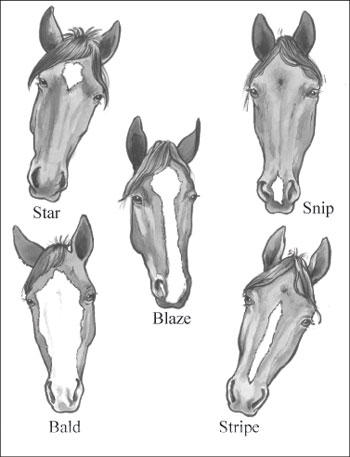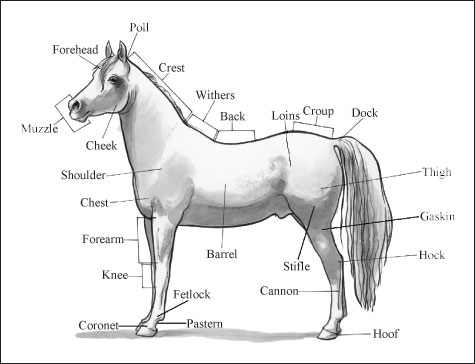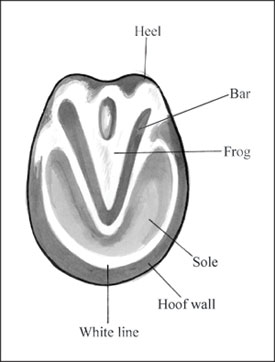If you hang around a stable or equestrian event on a regular basis you’ll come to realise that horse people tend to speak in a language of their own. This language, which will sound like foreign tongue to anyone uninitiated, is what is used to describe intricate parts of the horse’s body.
Facial and leg markings are useful to help individualize your fine filly so you don’t leave a show with the wrong horse in the box. There are specific names to each marking which are universally known amongst the equine community, the most common are shown in the diagram below (most of the patterns have subtle variations).
Leg markings are usually described by the highest point of the horse's leg that is covered by white. Coat color and markings developed over millions of years to give the animal the best possible camouflage for the area in which it lived. Markings on horses usually are distinctive white areas on an otherwise dark base coat color. Most horses have some markings, and they help to identify the horse as a unique individual. Markings are present at birth and do not change over the course of the horse's life.

A Horses body is an impeccably designed machine of muscle and bone that nature produced combined with elegance and grace, and can reach speeds of up to 40mph. When you spend time around horses you can begin to understand the anatomy of the four legged specimen and begin to understand the lingo that comes with them.

Becoming familiar with the parts of the horse's hoof gives you intimate knowledge of this most important part of the equine body referring to the quote ‘No Hoof, No horse’. Knowing which part of the hoof is which means you can take better care of your horse's tootsies.

Some horse people do believe that black feet tend to be harder than light feet, or more brittle than light feet.The color of the hoof is influenced by the color of the skin above it, so if a horse has white markings directly above the hoof, the hoof itself may carry the same pigmentation. Many people believe that hooves with black walls are stronger than hooves with white walls hence the poem below.
One white foot, buy him,
Two white feet, try him,
Three white feet, be on the sly,
Four white feet, pass him by.